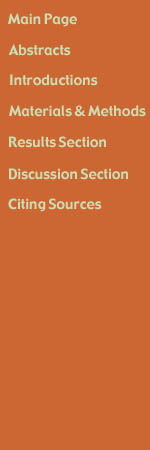

Citing Sources
(printable version here)
The last part of a report can often be the most tedious, but it need not be the most difficult. The literature cited portion of your paper is very important because it enables either you or another reader to go back and obtain the sources that you used in preparing your report. It also allows the reader to obtain additional information if he or she wants to find out about a certain topic you addressed. Another important reason for having a literature cited page is that it allows anyone who is unsure of your data to go back and verify that you reported everything correctly, thus eliminating any uncertainty. To clarify what information was obtained from what sources, use internal citation. Always check with your teacher as to the type of documentation that he or she prefers, for there are many different ways that it can be done.
One helpful hint to remember when preparing a literature cited page is that you should only include those sources that you actually used in writing your report. Often one obtains many sources of data when first beginning a research paper, but in the end, only a few are actually incorporated into the paper. Do not include sources that you have not used. In addition, always list sources alphabetically according to the last name of the author.
In-text citation
This type of citation is necessary so readers know what information is factual and where it was obtained. Direct quotes are rarely used in laboratory reports and should be avoided. If you are including some general information gathered from a source, then it is acceptable to put the citation at the end of the paragraph containing the information being used. An example of this type of citation could look like this:
Tumor Necrosis Factor is a cytokine that induces apoptosis (Sarin, 1995).
It is also important to keep these in-text citations brief so that they won't take away from the content of your paper. For this reason, if a source has more than one author, the last name of the first alphabetic author should be listed with an "et al." following the name. Here is an example of how this can be done (Carlton et al., 1996). The reader will know that the source has many authors and that they can be found in the literature cited portion of the paper.
Literature Cited page
This page is all about copying a format. The following are examples of citations from different sources. Be sure to note punctuation when copying these formats.
Listing an article from a book
Toole, B. P. 1981. Glycosaminoglycan in morphogenesis. In: Cell Biology of Extracellular Matrix (E. D. Hay, editor), Plenum Press, NY, pp. 259-294.
Listing a laboratory manual or handout
Biology 13 Laboratory Manual. 1996. Exercise in Enzyme Kinetics, pp. 16-23. University of Richmond, VA.
Trimmer, B. A. 1991. Exercise of physiology, suing insects as models. Biology 49 Laboratory Handout. University of Richmond, VA.
Listing Journal references
Bayne, B. L. 1972. Some effects of stress in the adult on the larval development of Mytilus edulis. Nature (London) 237: 459.
Carlton, J. T., G. J. Vermeij, D. R. Lindberg, D. A. Carlton, and E. C. Dudley. 1991. The first historical extinction of a marine invertebrate in an ocean basin. Biol. Bull. 180: 72 80.
These are just some examples of the most common types of sources that you will run into. If you need examples of citations for other sources, then consult a reference manual that will be able to help you. Especially now that information is obtainable from the Internet, it is important to learn how to properly cite anything that you might use in your report.
All citations from Pechenik, Jan A. A short guide to writing about Biology. pp. 54-102, Tufts University: Harper CollinsCollege Publishers. 1993.
All reference examples from Hacker, Diana. A Writers Reference. 3rd ed. Boston: Bedford Books of St. Martin's Press, 1995.
Other Disciplines | Writer's Web | Make
a Tutoring Appointment | Library | Department of Biology
Copyright Info